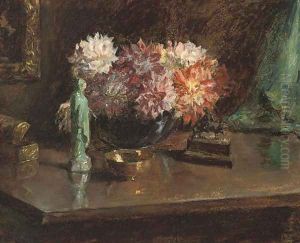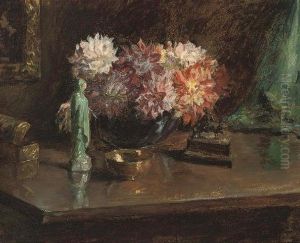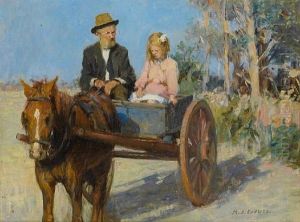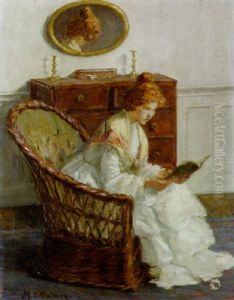Maud Stanhope Forbes Paintings
Maud Stanhope Forbes, born in 1861, was an English artist known for her portrait paintings and as the wife of the artist Stanhope Forbes, a leading figure in the Newlyn School of painters. Although Maud's work has often been overshadowed by that of her husband, she was a talented artist in her own right and an active participant in the vibrant artistic community of Newlyn, Cornwall.
Maud began her artistic education in London, where she studied at the South Kensington Art School. She later continued her studies in Paris, which was a common practice for many aspiring artists of the time who sought to refine their skills and engage with the avant-garde movements of the continent. Her work was influenced by the impressionist movement, and she adopted a looser, more vibrant style that captured the effects of light and color.
In 1889, Maud married Stanhope Forbes, whom she met in the artists' colony in Newlyn. Together, they became central figures in the Newlyn School, which was characterized by its adherence to plein air painting, the practice of painting outdoors to directly capture the qualities of natural light and atmosphere. While her husband is often credited with being the leader of this group, Maud was an integral part of the school, contributing her perspective as a woman artist and helping to foster the community that made Newlyn a hub for British art at the turn of the century.
Throughout her career, Maud exhibited her work at various venues, including the Royal Academy and the Paris Salon. Her subjects often included intimate domestic scenes, landscapes, and portraits, the latter of which displayed her keen ability to capture the personality and essence of her sitter. Maud's artistic output was somewhat limited due to her responsibilities as a mother and her role in supporting her husband's career, which was common for women of her time.
Maud Stanhope Forbes's legacy as an artist is intricately tied to the Newlyn School and the broader narrative of British art in the late 19th and early 20th centuries. Though she did not achieve the same level of fame as her husband during her lifetime, recent scholarship and exhibitions have begun to reassess her contribution to art history and recognize her individual talents. She passed away in 1947, leaving behind a body of work that reflects the life and times of a woman artist at the intersection of personal expression and the collective endeavor of the Newlyn School.



